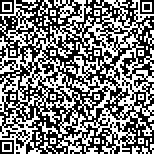|

二维码(扫一下试试看!) |
| 超声/紫外强化Fenton法深度处理造纸废水研究 |
| Ultrasonic/Ultraviolet Enhanced Fenton for Advanced Treatment of Papermaking Wastewater |
| 收稿日期:2022-07-05 |
| DOI:10.11980/j.issn.0254-508X.2022.09.013 |
| 关键词: 超声 紫外 Fenton 造纸废水 深度处理 协同效应 |
| Key Words:ultrasonic ultraviolet Fenton papermaking wastewater advanced treatment synergistic effect |
| 基金项目:四川省水利厅科研项目《改性田螺壳生物炭对水中三氯生(TCS)的吸附性能及机理研究》(编号:SKY2019-05)。 |
|
| 摘要点击次数: 2471 |
| 全文下载次数: 1479 |
| 摘要:本研究采用超声/紫外强化Fenton法深度处理造纸废水,以COD、BOD去除率为评价指标,研究反应时间、超声功率和频率、紫外强度、H2O2和FeSO4·7H2O投加量、pH值对处理效果的影响。结果表明,超声/紫外强化Fenton法深度处理造纸废水的最佳处理条件为:反应时间90 min、超声功率160 W,超声频率50 kHz、紫外光强度12 mW/cm2、H2O2投加量12 mL/L、FeSO4·7H2O投加量500 mg/L、溶液pH值=5,最佳反应条件下造纸废水的CODCr和BOD5去除率分别为74.8%和75.5%。超声/紫外强化Fenton法深度处理造纸废水具有协同效应,其处理效果优于超声+紫外+Fenton法。超声/紫外强化Fenton法深度处理后,造纸废水满足《城镇污水处理厂污染物排放标准》GB 18918—2002一级A排放标准。 |
| Abstract:In this study, ultrasonic/ultraviolet enhanced Fenton method was used for advanced treatment of papermaking wastewater. With the COD and BOD removal rates as evaluation index, the effects of reaction time, ultrasonic power and frequency, ultraviolet intensity, dosage of H2O2 and FeSO4·7H2O, and pH value on the treatment effect were studied. The result showed that the optimal treatment conditions of ultrasonic/ultraviolet enhanced Fenton method for advanced treatment of papermaking wastewater were as follows: reaction time 90 min, ultrasonic power 160 W, ultrasonic frequency 50 kHz, ultraviolet intensity 12 mW/cm2, dosage of H2O2 12 mL/L, FeSO4·7H2O 500 mg/L, and pH value 5. Under the optimal treatment conditions, the CODCr and BOD5 removal rates of papermaking wastewater were 74.8% and 75.5%, respectively. The ultrasonic/ultraviolet enhanced Fenton method had a synergistic effect on the advanced treatment of papermaking wastewater and its treatment effect was better than that of the combination of ultrasonic+ultraviolet+Fenton method. After the advanced treatment by ultrasonic ultraviolet enhanced Fenton method, the papermaking wastewater meets the class A standard of GB18918—2002 “Discharge Standard of Pollutants for Municipal Wastewater Treatment Plant”. |
| 查看全文 HTML 查看/发表评论 下载PDF阅读器 |